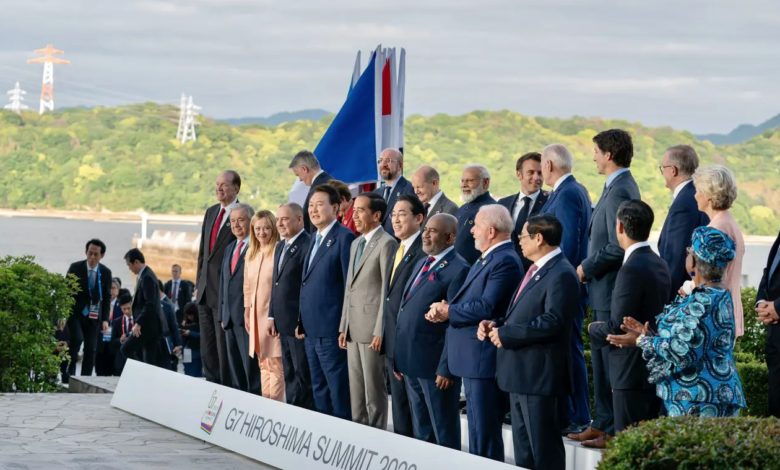Hiroshima G7 says yes to new fossil gas investments

In the final communiqué of the Japanese G7 passes the Tokyo line
– It will only be a “temporary” solution. In any case “carried out in a manner consistent with climate commitments”. And without creating “lock-in effects”. But the decision made on Saturday, May 20 by the G7 in Hiroshima is a 180-degree reversal. From Japan, Italy and other participants in the summit said yes to new investments in fossil gas. Justified by the need to completely disengage from Russian gas.
A decision that has been prepared by months of negotiations during which the Japanese Sherpas have also held their own against the resistance of other countries. The formula that was included in the final communiqué is rich in distinctions, clauses, precautions, but the central message remains: about-turn, expanding the extraction and trade of gas, especially in liquefied form, is essential.
What the Hiroshima G7 decided on gas
Point 26 of the statement, in the chapter dedicated to energy, opens with the reaffirmation of the commitment to the phase out of fossil fuels “unabated”, ie without associated technologies for the capture and storage of CO2. Then he goes on to a long analysis of the impact of the war in Ukraine, the importance of energy security and geostrategic interests. We repeat formulas already included in previous communiqués on energy and gas savings: “It is necessary to accelerate the elimination of our dependence on Russian energy, including through energy saving and the reduction of gas demand, in a manner consistent with the commitments made in Paris”.
But the heart of the statement comes immediately after: we must start investing again in fossil gas. “In the exceptional circumstance of speeding up the elimination of our dependence on Russian energy, public investment in the gas sector may be appropriate as a temporary response, based on clearly defined national circumstances, if implemented in a manner consistent with our climate objectives without creating lock-in effects, for example by ensuring that projects are integrated into national strategies for the development of low-carbon and renewable hydrogen”, reads.
Read also Stop new plastic pollution from 2040, the promise of the G7
The reference to dual-gas pipelinesuse to transport also hydrogen is a formula widely used in recent years to justify the creation of new gas infrastructure even in the face of a stable or expected decreasing demand and unsustainability of similar projects if you want to comply with the roadmap for the farewell to gas and the achievement of carbon neutrality by mid-century.
Criticism from environmental NGOs
Many protests by civil society. For Greenpeace, the Hiroshima G7 decision is a “complete negation” of the climate emergency: “Faced with the urgent need to phase out fossil fuels, what the leaders brought to the table represents an endorsement of new fossil gases. The gap between the ambitions of the G7 and the demands of climate science is clear and growing“.
“The fact that we talk about the need to keep global warming below 1.5 ºC while continuing to invest in gas demonstrates a bizarre political disconnect from science and a complete disinterest in the climate emergency”points out Climate Action Network.
“Instead of excluding new investments in gas, G7 leaders have left the door open to anachronistic fossil fuel infrastructure. German Chancellor Olaf Scholz unfortunately passed a weaker language than that used by his climate minister Habeck in the recent G7 ministerial on climate and energy”.
From this language, further weakened compared to that achieved in the ministries on Environment and Energy, will start next year the G7 Italian-led.





